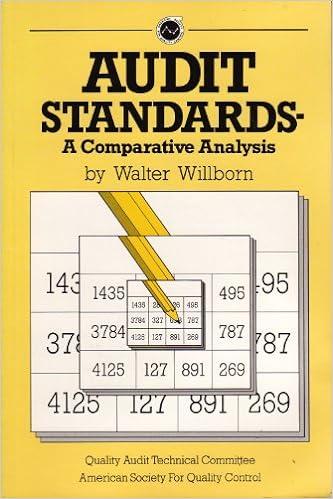Question
The period end adjusting entry for bad debt expense under the allowance method is Cash, debit; Accounts Receivable/customer name, credit. not required. Bad Debt Expense,
The period end adjusting entry for bad debt expense under the allowance method is
| Cash, debit; Accounts Receivable/customer name, credit. | |
| not required. | |
| Bad Debt Expense, debit; Accounts Receivable/customer name, credit. | |
| Bad Debt Expense, debit; Allowance for Uncollectible Accounts, credit. |
Bach Instruments had total assets of $560,000; total liabilities of $250,000; and total Stockholders' Equity of $310,000. Bach's debt ratio is
| 44.6%. | |||||||||
| 28.7%. | |||||||||
| 80.6%. | |||||||||
| 55.4%. The entry to record selling 300 shares of stated value $60 common stock for $70 per share would be
|
The Statement of Cash Flows reports the sources and uses of cash from all of the following EXCEPT
| financing activities. | |||||||||||||||||||||||||||||||||
| managerial activities. | |||||||||||||||||||||||||||||||||
| operating activities. On the Income Statement, the results of discontinued operations are reported
| |||||||||||||||||||||||||||||||||
| investing activities.
What was the percentage of change in Accounts Receivable if the balance was $80,000 in 2013 and $60,000 in 2014?
In accounting, what is the meaning of capitalized?
|
Step by Step Solution
There are 3 Steps involved in it
Step: 1

Get Instant Access to Expert-Tailored Solutions
See step-by-step solutions with expert insights and AI powered tools for academic success
Step: 2

Step: 3

Ace Your Homework with AI
Get the answers you need in no time with our AI-driven, step-by-step assistance
Get Started


